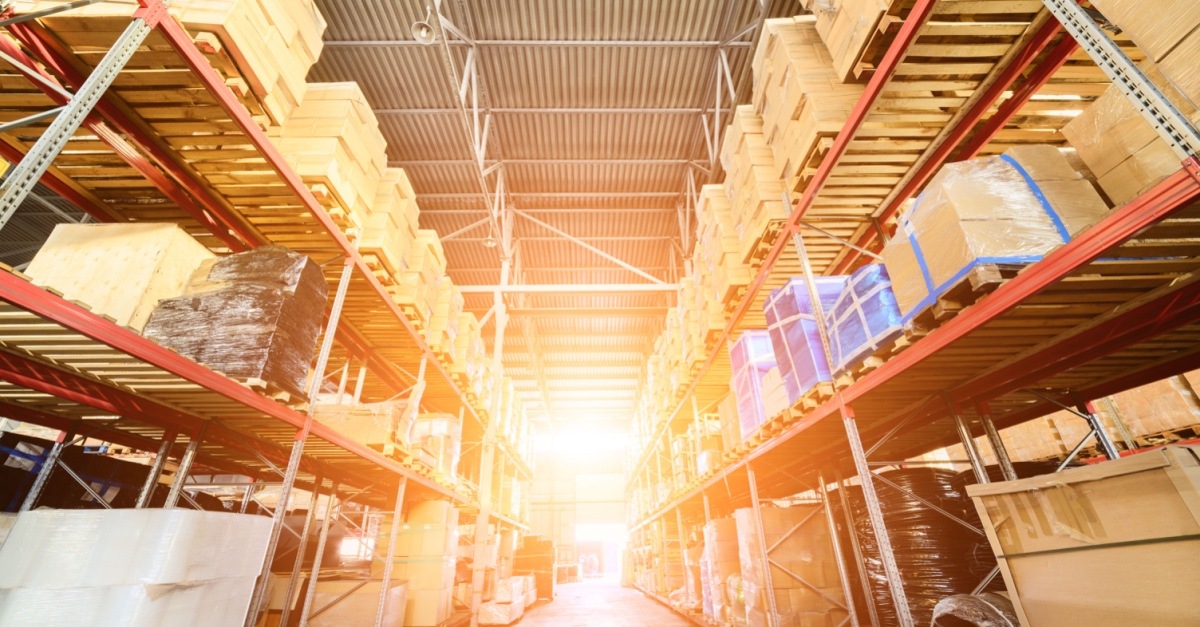9 min read
8 Benefits of Having an Onboarding Team When Choosing a 3PL
Partnering with a 3PL (third-party logistics) sounds simple until you hit inventory transfers, integrations, and lost orders. Most businesses think...
7 min read
Productiv : November 13, 2023
![What is a 3PL Warehouse Management System? [Guide for 2026]](https://www.getproductiv.com/hubfs/GetProductiv_October2024/images/warehouse%203pl.jpg)
Third-party logistics providers face mounting pressure to manage multiple clients, complex inventories, and demanding service level agreements simultaneously.
Traditional warehouse management approaches can't keep pace with these operational complexities, often leading to errors, inefficiencies, and client dissatisfaction.
A 3PL warehouse management system solves these challenges by providing specialized software designed specifically for multi-client logistics operations, enabling providers to scale efficiently while maintaining accuracy and visibility across all customer accounts.
20 Years of Kitting Excellence
Ready to Streamline Your Supply Chain?
Join industry leaders achieving 99%+ SLA performance with flexible kitting.
Fulfillment, and 3PL solutions. We handle over 100 million kits annually
A 3PL warehouse management system (WMS) is specialized software designed to manage warehouse operations for third-party logistics providers serving multiple clients. Unlike standard warehouse management systems built for single-company operations, 3PL WMS platforms handle managing separate inventories, billing structures, and operational requirements for numerous customers within the same facility.
The system creates virtual warehouses within a physical space, allowing each client to maintain independent inventory visibility, customized workflows, and separate billing arrangements. This multi-tenant architecture enables 3PLs to serve diverse industries, from e-commerce and retail to pharmaceuticals and manufacturing, all from a single platform.

Core components of a 3PL WMS include inventory management across multiple client accounts, order processing and fulfillment, billing and invoicing, labor management tools, and integration with client systems. The software tracks inventory at the SKU (Stock Keeping Unit) level for each customer, manages receiving and putaway processes, orchestrates picking and packing operations, and generates detailed reporting for both internal operations and client visibility.
According to the Warehousing Education and Research Council, best-in-class operations achieve 99.88% inventory accuracy, directly impacting 3PL service quality and client retention.
Modern 3PL warehouse management systems streamline operations, reduce errors, and enhance client satisfaction at every stage of fulfillment. Here are the core capabilities that make a 3PL WMS indispensable:
The foundation of any 3PL WMS is its ability to maintain completely separate operational environments for each client within a shared system. This includes independent user permissions, customized workflows, separate reporting dashboards, and isolated data structures that prevent any cross-client visibility or contamination.
Each tenant can configure their own business rules for receiving standards, quality control procedures, putaway strategies, picking methodologies, packing requirements, and shipping carrier preferences. The system enforces these rules automatically without manual intervention, ensuring consistent service delivery according to each client's specifications.
3PL WMS platforms provide granular inventory tracking beyond basic SKU counts. The system manages inventory attributes, including lot numbers, serial numbers, expiration dates, manufacturing dates, country of origin, and custom fields specific to client requirements.
Real-time inventory updates occur at every transaction point, from receiving, putaway, picking, packing, shipping, and ensuring perpetual accuracy. The system supports cycle-counting programs with ABC analysis, exception-based counting triggers, and automated discrepancy-resolution workflows that maintain inventory integrity without complete physical counts.
According to Aberdeen Group research, best-in-class warehouses using advanced WMS technology achieve 99.94% picking accuracy and 99.88% inventory accuracy, compared with 98.83% picking accuracy and 97.54% inventory accuracy for industry-average performers.

The billing module accommodates diverse pricing structures, including storage fees (per pallet, per square foot, per cubic foot), transaction-based charges (per line, per order, per unit), labor charges (hourly, per task, per unit), and value-added service fees for kitting, labeling, or special handling.
The system tracks actual resource consumption throughout operations and generates detailed invoices with line-item breakdowns. Automated billing reduces administrative overhead while providing the transparency clients need to understand their 3PL costs. Support for minimum billing thresholds, volume discounts, and promotional pricing ensures the engine handles complex contractual arrangements.
Modern 3PL WMS solutions connect seamlessly with client systems, including e-commerce platforms (Shopify, Magento, BigCommerce), enterprise resource planning (ERP) systems (SAP, Oracle, NetSuite), transportation management systems (TMS), and e-commerce marketplaces (Amazon, eBay, Walmart).
These integrations enable automated order flow from client systems into the WMS, real-time inventory synchronization, automated shipping notifications, and tracking number updates. API-based architectures and pre-built connectors reduce integration timelines from months to weeks while supporting the addition of new clients without custom development.
The labor management module optimizes workforce productivity through engineered labor standards, real-time performance monitoring, and support for incentive programs. The system assigns tasks based on worker skill levels, current location, and priority requirements while tracking completion times and quality metrics.
Supervisors gain visibility into individual and team performance through dashboards showing units per hour, lines per hour, accuracy rates, and adherence to standard times. This data identifies top performers, reveals training opportunities, and provides the metrics needed to manage a productive warehouse workforce.
Comprehensive reporting tools serve both internal operations management and client communication needs. Standard reports cover inventory levels, order status, productivity metrics, billing summaries, and exception conditions. Customizable dashboards allow clients to monitor their own KPIs without requiring 3PL staff intervention.
Advanced analytics capabilities include trend analysis, predictive modeling for demand forecasting, what-if scenario planning, and automated alerts for threshold violations. Data-driven warehouses can achieve significantly higher productivity than facilities that rely on basic reporting.
For 3PLs managing high-volume dock operations, yard management functionality tracks trailers, containers, and vehicles throughout the facility. The system monitors dock door assignments, appointment scheduling, driver check-in, and dwell times to optimize throughput.
Integration with gate systems automates vehicle entry and exit processing while providing visibility into what's in the yard at any moment. This prevents detention charges, reduces trailer search time, and improves carrier relationships through efficient turn times.
Handheld devices and mobile applications extend WMS functionality to the warehouse floor through barcode scanning, voice picking, tablet-based workflows, and heads-up display technology. Mobile platforms enable real-time data capture at the point of activity, eliminating paper-based processes and batch data entry.
Workers receive directed work assignments on their devices, complete tasks with validation steps to ensure accuracy, and immediately update the system with results. This mobile-first approach increases productivity while reducing errors associated with manual data entry.
A 3PL WMS includes a multi-tenant architecture that allows the separate management of multiple client inventories within a single system, whereas standard WMS solutions are designed for single-company operations. 3PL systems also include sophisticated billing engines to charge clients based on actual resource usage, client portals for customer self-service, and flexible configuration to accommodate different operational requirements per customer.
Implementation timelines typically range from 3-12 months, depending on warehouse complexity, number of clients being migrated, integration requirements, and customization needs. Standard implementations often take 4-6 months, while complex deployments serving numerous clients with unique requirements may extend to 9-12 months. Phased rollouts that onboard clients gradually are often more manageable than big-bang implementations that attempt to migrate all operations simultaneously.
Yes, modern 3PL WMS platforms support integration with most common e-commerce platforms, ERP systems (enterprise resource planning), order management systems, and marketplaces via APIs (Application Programming Interfaces), EDI (Electronic Data Interchange), flat-file transfers, or pre-built connectors. The specific integration approach depends on the client system's capabilities and the data exchange requirements. Most implementations include several standard integrations, with additional client connections added as new customers onboard to the 3PL's services.
Most 3PLs achieve a return on investment within 12-24 months through labor savings, improved billing accuracy, reduced errors, and the ability to take on additional clients without proportional cost increases. Some operations begin seeing measurable benefits within 60-90 days of going live, with more significant improvements accruing over 3-12 months as processes are streamlined. The exact timeline depends on implementation costs, warehouse volume, and the organization's adoption of new methods.
It depends on your current system's capabilities and vendor roadmap. Some traditional WMS vendors now offer 3PL modules or multi-tenant functionality as add-ons to their core platforms, while others lack the architectural foundation to support actual multi-client operations. Evaluate whether your current vendor can provide the specific 3PL features you need, particularly billing automation, client portals, and tenant isolation, before committing to a complete system replacement.
The system streamlines client onboarding through templated setup workflows that configure new tenant spaces, import product catalogs, establish billing rules, set operational parameters, create user accounts, and integrate with client systems. Most 3PL WMS platforms allow operational teams to onboard straightforward clients without IT involvement, reducing time-to-service from weeks to days. Complex clients with unique requirements may still require custom configuration, but the multi-tenant foundation handles the core setup automatically.
3PL WMS platforms employ data isolation to prevent clients from accessing another customer's information, role-based access controls to limit user permissions to appropriate functions, encryption for data at rest and in transit, audit logging of all system activities, and regular security assessments. Leading vendors comply with SOC 2, ISO 27001, and industry-specific standards such as HIPAA for healthcare logistics and FDA 21 CFR Part 11 for pharmaceutical operations.
Get ideas on how to delight your customers with delivery on their timeline.

9 min read
Partnering with a 3PL (third-party logistics) sounds simple until you hit inventory transfers, integrations, and lost orders. Most businesses think...

8 min read
Managing inventory for household goods is different from handling other products. Furniture pieces take up serious warehouse space, bedding comes...

6 min read
Peak seasons hit fast. One day you're handling your regular order volume, and the next you're drowning in customer demands that seem impossible to...